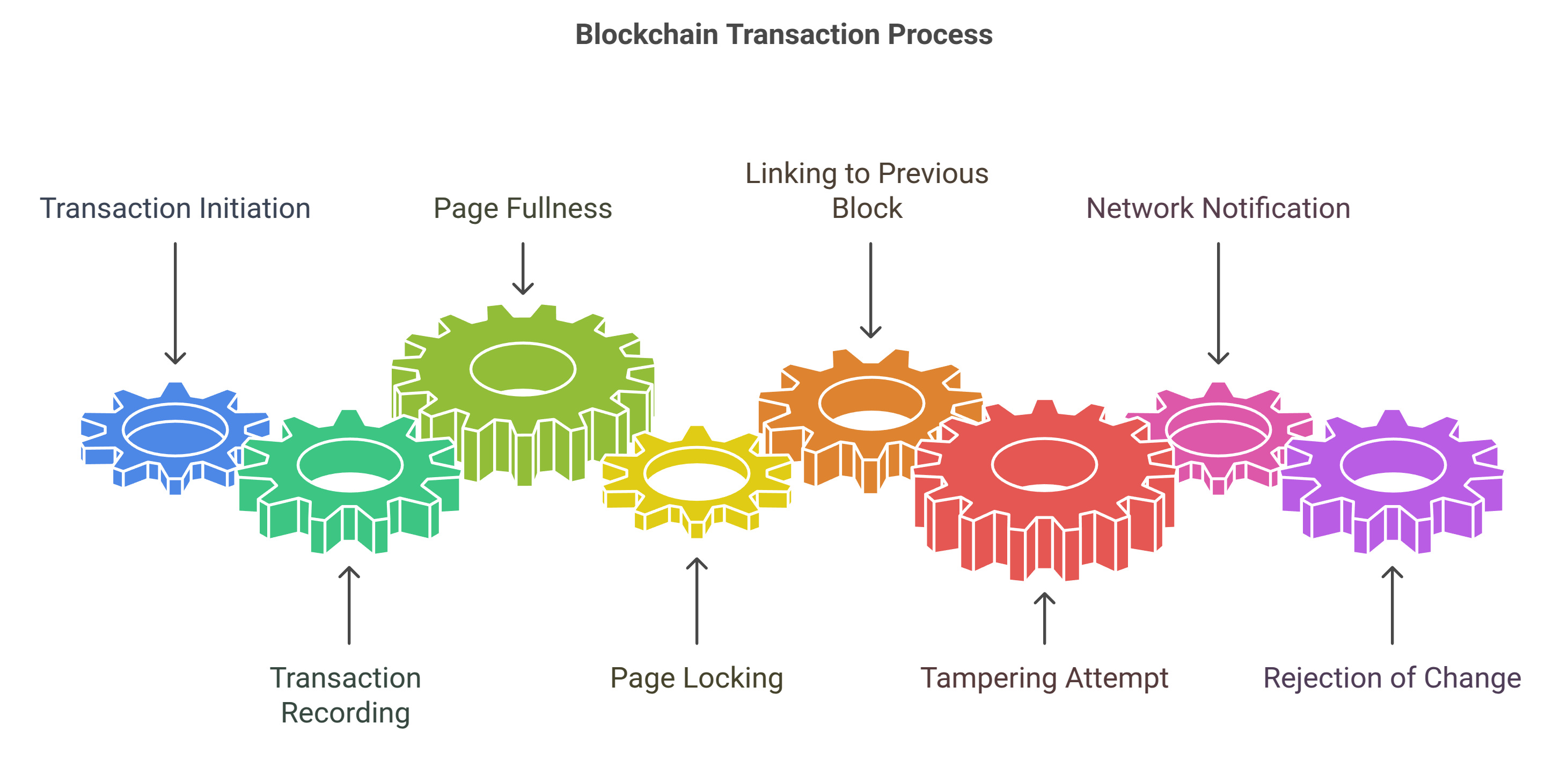

Blockchain is revolutionizing the way we think about data security, transparency, and trust in digital transactions. Imagine a blockchain as a notebook shared by many people. Each page (or block) records transactions—such as “John paid Sarah $10.” Once a page is full, it’s locked and linked to the previous one, forming a continuous chain. This unique structure ensures that if someone tries to change an old page, everyone else’s notebook would notice, and the attempt would be rejected. This unchangeable nature makes blockchain nearly impossible to tamper with, securing data and establishing trust in digital transactions.


At its core, blockchain is a decentralized system that allows secure and transparent storage and sharing of data without the need for intermediaries. Every participant in the blockchain network has access to the same data, and each transaction is verified through consensus. This structure reduces the possibility of fraud, ensuring that all records are reliable and trustworthy. Blockchain's ability to make information immutable is especially powerful for industries where data integrity is crucial, such as in financial transactions, contracts, and supply chain management.
Blockchain operates as a digital ledger, where each transaction or record is stored in a “block.” Once a block is filled, it is locked, and the system generates a cryptographic hash that links it to the previous block. This chain of blocks, known as the blockchain, grows continuously, forming an unbreakable chain of records. Because each block contains the history of the previous one, altering a block would require changing every subsequent block—a near-impossible task. This ensures the integrity and security of the data stored on the blockchain, making it a highly reliable and transparent system.
One of the key features that sets blockchain apart from traditional databases is its unchangeable nature. Once a block is added to the chain, it is virtually impossible to alter. This is because each block is linked to the previous one through a cryptographic hash. If an attacker were to try to tamper with a block, the hash would change, breaking the chain and alerting the network. This feature is especially important for applications where trust and security are paramount, such as digital currency transactions and smart contracts.
Blockchain technology is already transforming industries by offering secure, transparent, and efficient solutions:
The potential for blockchain is vast. As industries continue to explore its applications, blockchain promises to reshape the way we conduct transactions, manage data, and build trust. From finance to healthcare, its impact is far-reaching, offering solutions that promote security, efficiency, and transparency across the digital world.
As a Software Engineer at IRI, the role involves developing innovative, scalable solutions for data and software validation in resource tracking. With expertise in web development and engineering, the software engineer plays a key role in building high-quality solutions that align with the company’s technological vision and growth.
Smart Fingerprint technology enables fast, secure, and error-free attendance tracking . . . . . .
Blockchain is a game-changing technology with diverse applications. This blog simplifies what blockchain . . . .
AI Agents are transforming industries by making real-time decisions, automating workflows, and improving efficiency. From chatbots to self-learning business tools, these intelligent systems are . . . .